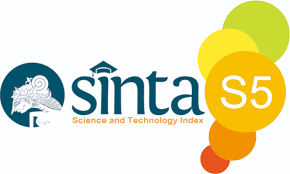EVALUASI PERKEMBANGAN BUMDES SYARI’AH USAHA BERSAMA DESA MAHATO SAKTI
DOI:
https://doi.org/10.30606/cano.v12i1.2131Keywords:
Analysis, Development, BUMDes, ClassificationAbstract
BUMDes is a community economic institution that is managed directly by the village community and village government to obtain results and profits. The existence of BUMDes is very strategic which in the end BUMDes functions as a driving force for the village
economy and the welfare of the village community. The results of the BUMDes are not only used for business development but also for village development, empowering village communities, and providing assistance to the poor through grants, social assistanc e, and
revolving fund activities as stipulated in the Village Revenue and Expenditure Budget. The purpose of this study is the development of BUMDes Syariah Joint Venture Mahato Sakti Village in terms of its development classification. In this study using a descriptive quantitative approach. The population of this study is 700. The sampling technique used by the authors in this study is a non-probability sampling method, with the accidental sampling method, which is a method of taking sample sizes by chance by distributing
questionnaires to respondents or customers calculated using the slovin formula so as to obtain the number of samples is 200 people. The level of development of BUMDes is measured by the Ministry of Health version score: basic: 25 – 49, growing: 50 -74, developing: 75 - 85 and advanced: above 86. The data analysis technique uses descriptive statistics. The results of the study show that the development of BUMDes Syariah Joint Venture Mahato Sakti Village in terms of its development classification is in the developing category with a score of 82.1 with six assessment parameters that have been set by the Ministry of Villages is institutions, rules/legality, BUMDes business, administration, reporting and accountability, capital and assets and the impact of BUMDes on village
communities.
Downloads
References
Anggraeni, M. R. R. S. (2016). Peranan Badan Usaha Milik Desa (Bumdes) Pada Kesejahteraan Masyarakat Pedesaan Studi Pada Bumdes Di
Gunung Kidul, Yogyakarta. Modus, 28(2), 155–168.
Anshori, M., & Iswati, S. (2019). Metodologi Penelitian Kuantitatif: Edisi 1. Airlangga University Press.
Azwar, S. (2010). Metodologi penelitian kuantitatif. Yogyakarta: Perpustakaan Pelajaran.
Diartho, H. C. (2017). Strategi Terhadap Pengembangan Kelembagaan BUMDESA di Kabupaten Jember.
Eriswanto, E., & Sudarma, A. (2017). Pengelolaan Sistem Administrasi Bagi BUMDES di Desa Sukaraja. Jurnal UMMI: Jurnal Penelitian Dan
Pengembangan Sains Dan Teknologi , 11(3), 1–7.
Moleong, L. J. (2015). Metode Penelitian Kualitatif. Bandung: Remaja Rosdakarya.
Nardin, Y. (2019). Kebijakan Pemerintah Desa Dalam Pemberdayaan Masyarakat Pada Program Bumdes. Jurnal Ilmu Sosial Dan Ilmu Politik
(JISIP), 8(3), 140–145.
Peraturan Daerah Kabupaten Rokan Hulu Nomor 6 Tahun 2020 Tentang
Pedoman Pendirian, Pengurusan Dan Pengelolaan, Dan
Pembubaran Badan Usaha Milik Desa. (n.d.).
Pradesyah, R., & Albara, A. (2018). Pengelolaan Potensi Badan Usaha Milik
Desa (Bumdes) Berbasis Syariah Di Desa Rambung Sialang Hulu
Kecamatan Sei Rampah Kabupaten Serdang Bedagai Sumatera
Utara. Jurnal Prodikmas Hasil Pengabdian Kepada Masyarakat, 2(2).
Rahmadanik, D. (2018). Peran Bumdes Dalam Pemberdayaan Masyarakat
Desa Cokrokembang Kecamatan Ngadirojo Kabupaten Pacitan.
JPAP: Jurnal Penelitian Administrasi Publik, 4(1).
https://doi.org/10.30996/jpap.v4i1.1293
Ramadana, C. B. (2013). Keberadaan Badan Usaha Milik Desa (BUMDES)sebagai Penguatan Ekonomi Desa (PhD Thesis). Brawijaya University.
Ridlwan, Z. (2015). Urgensi Badan Usaha Milik Desa (BUMDES) Dalam Pembangun Perekonomian Desa. FIAT JUSTISIA:Jurnal Ilmu Hukum, 8(3). https://doi.org/10.25041/fiatjustisia.v8no3.314
Risman, R. (2017). Pengaruh Jumlah Nasabah Peminjam Terhadap Perkembangan Aset Badan Usaha Milik Desa (Bumdes) Lestari Di Desa Kumain Kecamatan Tandun Kabupaten Rokan Hulu. Jurnal Daya Saing, 3(3), 207–216. https://doi.org/10.35446/dayasaing.v3i3.107 Sari, P., & Ummur, S. W. (2019). Analisis Kinerja Badan Usaha Milik Desa (BUMDes) Didesa Pohuwato Kabupaten Pohuwato. Accountia Journal (Accounting Trusted, Inspiring, Authentic Journal), 3(02), 425. https://doi.org/10.35915/accountia.v3i02.385
Sari, Y. W. (2017). Praktik Sosial Kelembagaan Badan Usaha Milik Desa (BUMDes) Artha Guna di Desa Kedensari Kec. Tanggulangin Kab.
Sidoarjo (PhD Thesis). Universitas Airlangga.
Siswanto, H., Dewi, D. C., Maryanto, M. A., & Brahmono, B. (2023). Analisis Pemberdayaan Ekonomi Masyarakat Melalui Bumdes Maju Bersama
Di Desa Jadian Baru Kecamatan Mulak Sebingkai. Jurnal Ilmiah Mahasiswa Perbankan Syariah (JIMPA), 3(1), 163–176.
Sugiyono. (2013). Metode penelitian pendidikan pendekatan kuantitatif, kualitatif dan R&D.
Sugiyono. (2016). Metode Penelitian Kuantitatif, Kualitatif dan R&D. Bandung: Alfabeta.
Trisnawati, A. P., & Indrajaya, G. B. (2014). Peran BUMDes Bagi Petani Miskin di Desa Bangli Kecamatan Baturiti Kabupaten Tabanan. Jurnal
Ekonomi Pembangunan Universitas Udayana, 6(6), 1097–1126.
Utami, K. S., Tripalupi, L. E., & Meitriana, M. A. (2019). Peran Badan Usaha Milik Desa (BUMDes) dalam peningkatan kesejahteraan anggota
ditinjau melalui kewirausahaan sosial. Jurnal Pendidikan Ekonomi Undiksha, 11(2), 498–508.
Wichaksono Prabowo, A. (2019). Penguatan Kebijakan Kelembagaan Badan Usaha Milik Desa Di Desa Suka Gerundi Kecamatan Parindu
Kabupaten Sanggau. Jurnal Publika, 8(4).
Winahyu, P., & Samsuryaningrum, I. P. (2022). Analisis Faktor-Faktor yang Mempengaruhi Kinerja Karyawan BUMDES Di Kabupaten Jember.
Jurnal Manajemen Dan Bisnis Indonesia, 8(1), 1–11.
Zahra, F., Amir, A. M., Masdar, R., & Putrianti, R. U. (2020). Penguatan pengelolaan BUMDes melalui pelaporan keuangan di desa sakinah jaya, parigi utara. Jurnal Pengabdian Pada Masyarakat, 8(2), 67–73.
Zulkarnaen, R. M. (2016). Pengembangan potensi ekonomi desa melalui badan usaha milik desa (Bumdes) Pondok Salam Kabupaten
Purwakarta. Dharmakarya, 5(1).
Downloads
Published
How to Cite
Issue
Section
License

This work is licensed under a Creative Commons Attribution-NonCommercial-ShareAlike 4.0 International License.

